Today we are exploring the AP-32H, an amplifier for headphones equipped with two Jack sockets of 6.35mm (for listening to music with your S.O.), a DAC USB, and an analog entry socket with a Cinch plug. Its audio signals can be internally digitalised at 24-bit/384kHz and transmitted and saved to a computer in file format via USB connection.
However, it is necessary to possess the downloading software. Qobuz would suggest Magix Samplitude Pro, recommended by Ami Audio, or Audacity, an open software which is free of charge.
Possessors of vinyl records will be able to digitise their precious CDs while having the possibility to insert a phono preamplifier between the deck and the AP-32H entry points, all the while listening to Studio Masters files at 24-bit/192kHz.
We invite you to discover this amplifier for headphones with DAC and AP-32H analog/digital convertor.
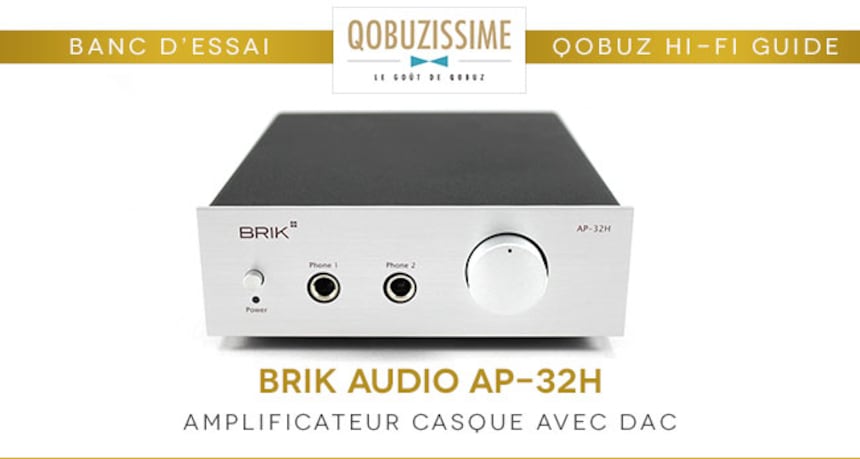
About the Brik Audio AP-32H headphone amplifier with DAC
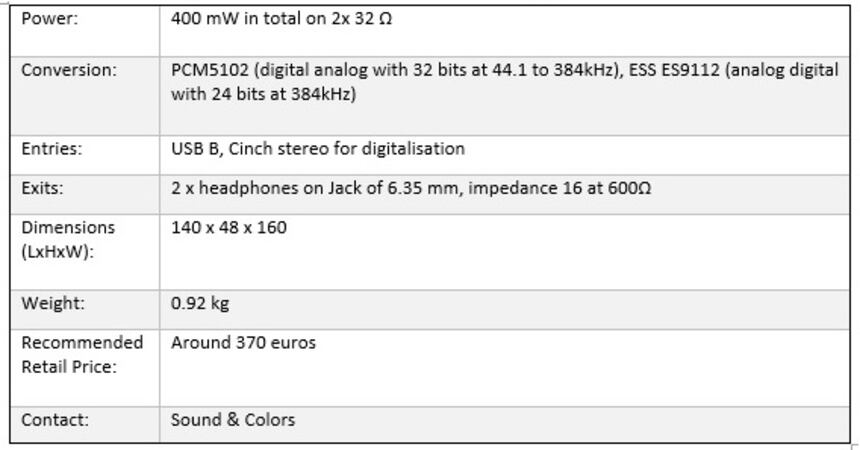
Presentation
Furnished with an anodised aluminium front in silver or black, the BRIK AP-32H headphone amplifier with DAC will delight lovers of clean sound and simplicity, with its' small power button, its two standard headphone jack sockets of 6.35 mm and its smooth volume dial.
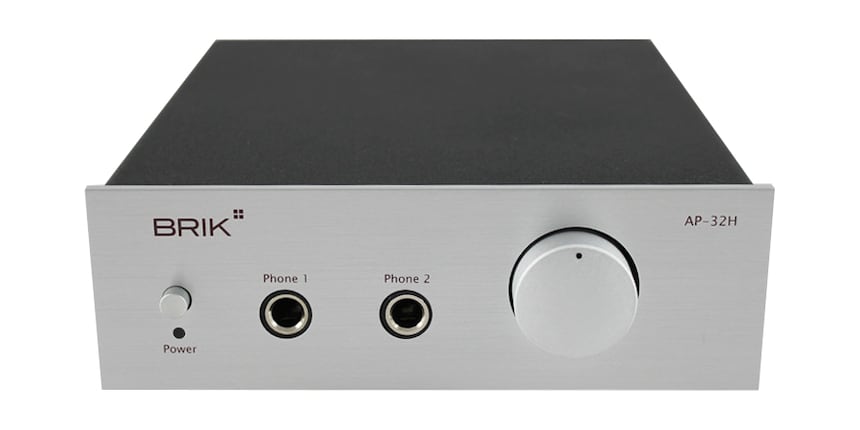
The connector is of the upmost importance and contains the following: a power supply socket that connects to the power adaptor, and an USB B outlet enabling you to connect to a computer to transfer analogical signals of 24-bit/38kHz, which will be injected into the Cinch socket. As these do not possess outputs they can be plugged into the input of the amplifier.
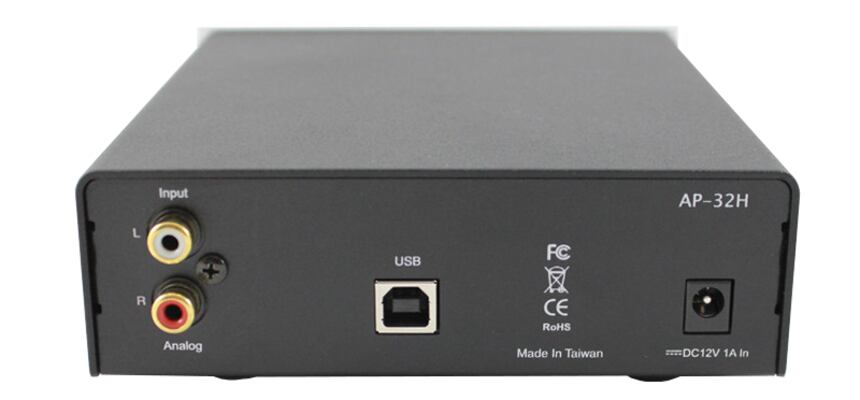
Manufacturing
The manufacturing of the AP-32H amplifier is very meticulous. It uses a solid metal frame that contains a single card where all the components are neatly inserted. The volume dial is fixed on a square bracket, which is screwed onto the lower beam of the frame, thus providing a very good mechanical stability for the bracket.
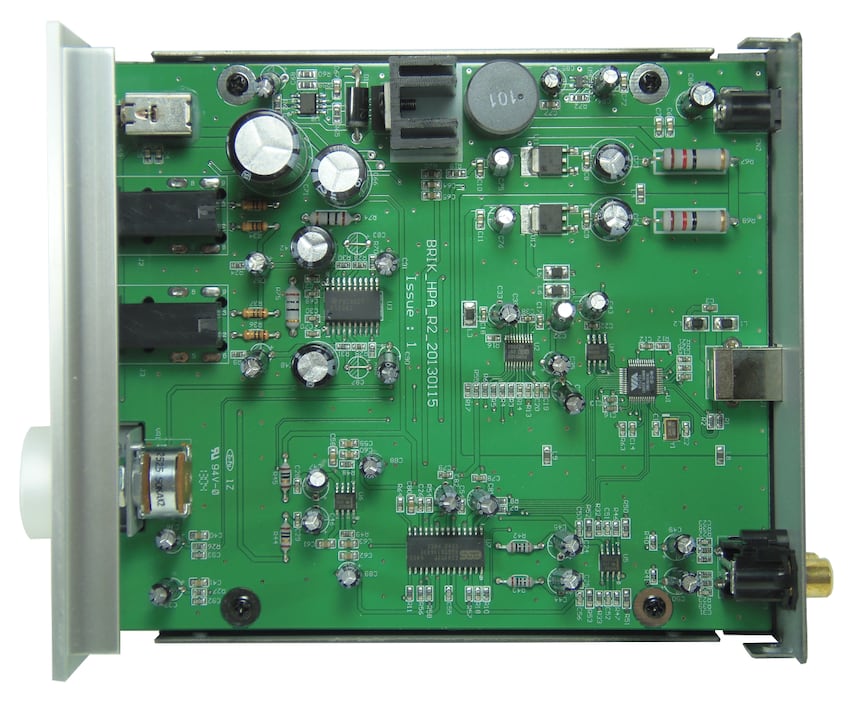
Electronics
There are two voltages of 3.3V that are made from the voltage of +12V, coming from the power supply. One is intended for the digital/analog conversion chip, the other is intended for the other digital chips.
The two voltages of 3.3V are stabilised by the regulators LM1117 3.3 marked by an RV filter consisting of a resistance of 12? (R) and a capacitor of 470 ?F/16V (C).

The voltage of + 12V will also be used to manufacture a voltage of -12V with a switching convertor of a MC34063 type. These two voltages are used to power the chip for the amplification of the headphones.
The VIA VT1731 chip is used as a USB interface which can also be used to decode digital audio files sent from a computer, and to broadcast the digitization of analog signals present in the Cinch inputs on the rear surface.
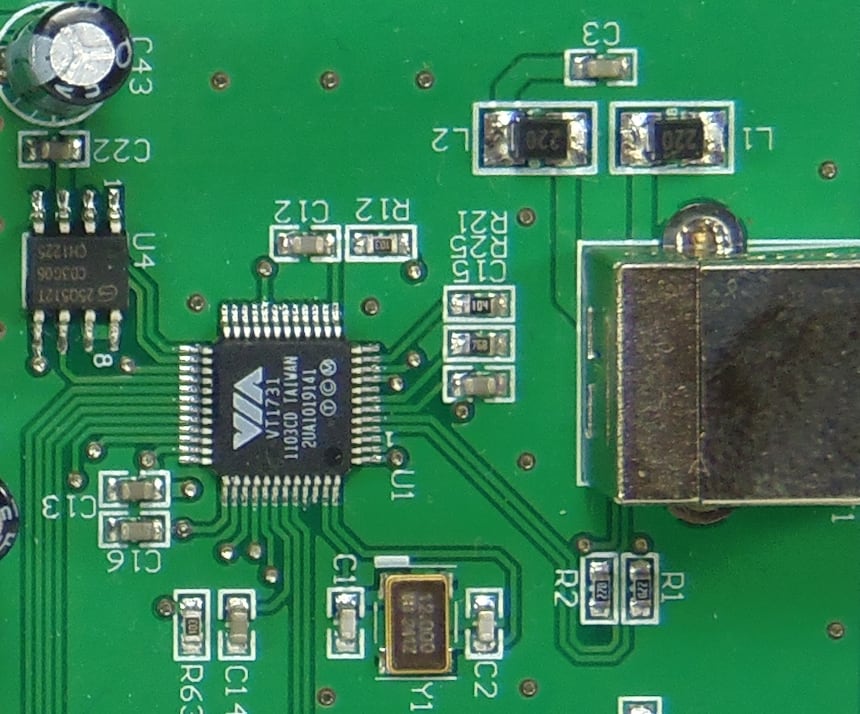
The digital analog convertor is a Burr-Brown PCM5102, which is one of the best chips in our opinion, being natively compatible with digital audio files up to 32 bits at 384kHz.
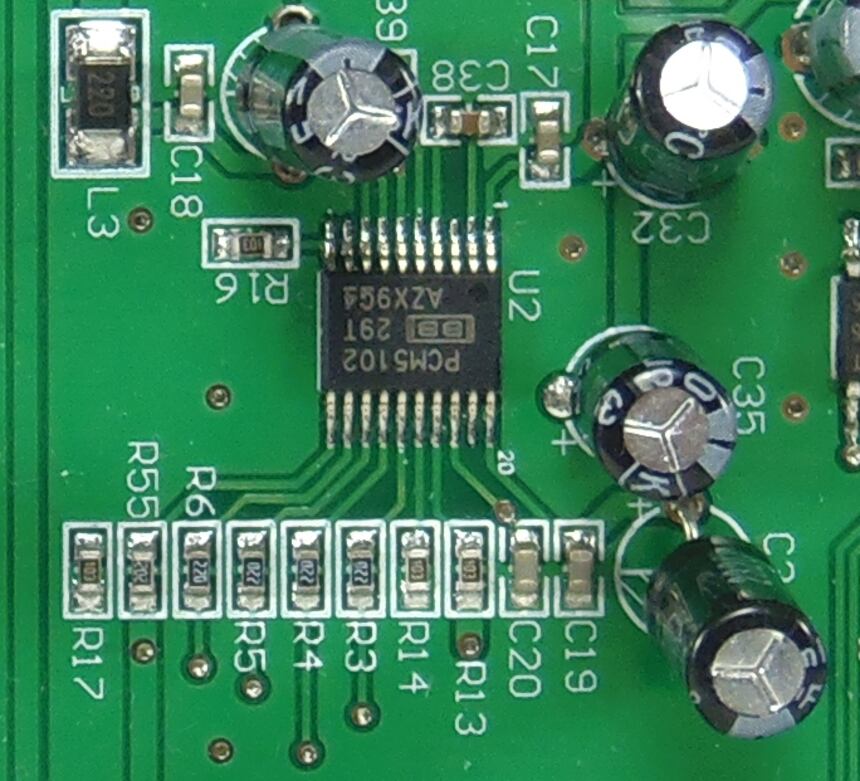
It is accompanied by an active filter built around the low noise NE5532 dual operational amplifier, a classic amongst quality audio applications. The signals are then sent to the volume control which will measure out the power of the amplifier for the headphones.
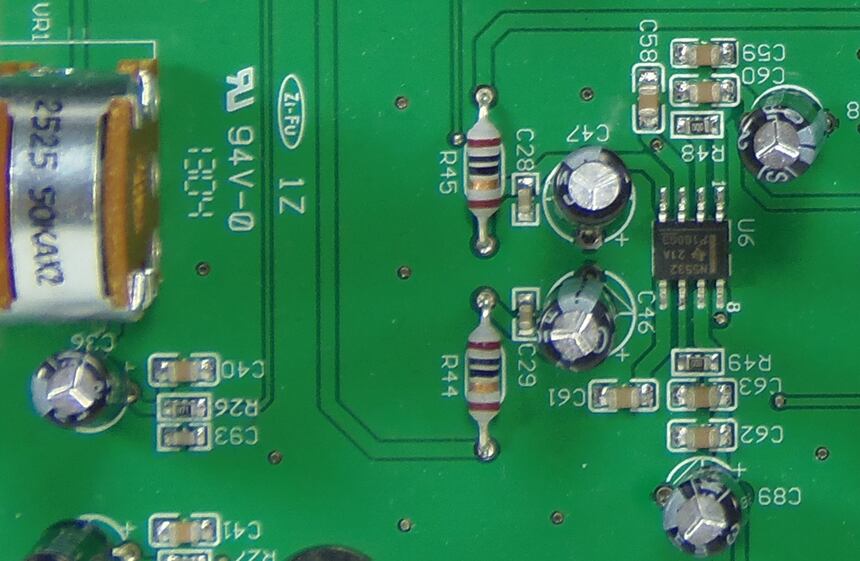
This headphone amplifier is a model that we are seeing more and more often. More specifically, it is a Texas Instruments TPA6120 integrated circuit. However, even though the microchip is effective, one cannot claim that the manufacturers are demonstrating any great originality or imagination in how they transport the music to our ears! But hey, when you take the recommended price for the AP-32H into account, you have to be forgiving? this device is far from unworthy.
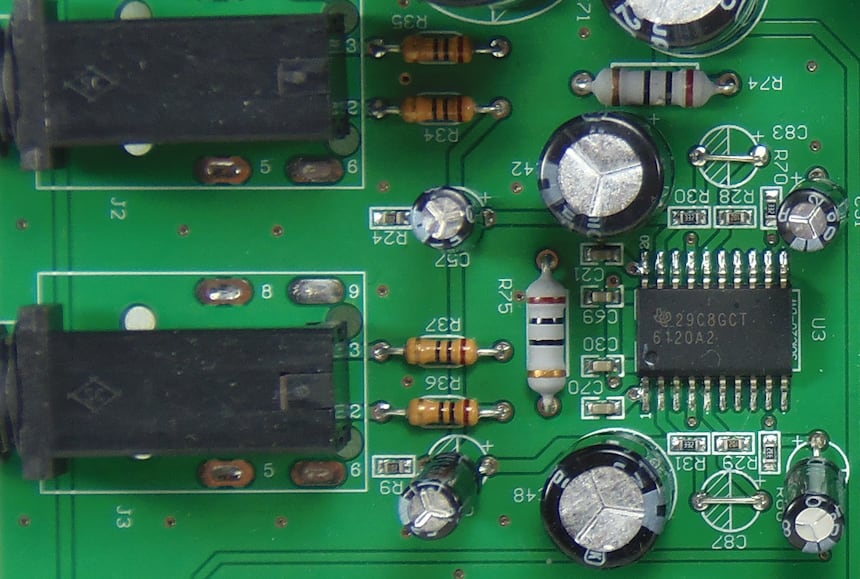
You should also note that the RC network contains resistances of 10? (R) and condensers of 1000 ?F/16V (C), filtering the power supplies of + 12V and -12V, whilst the condensers also ensure a good power reserve.
The digitization of 24-bit/384kHz analog signals, which come from the stereo input, is facilitated by an analog digital conversion plug of the ES9112 SABRE32 Ultra ADC model, from the American manufacturer ESS. Certain enthusiasts particularly appreciate the brand?s sound quality.
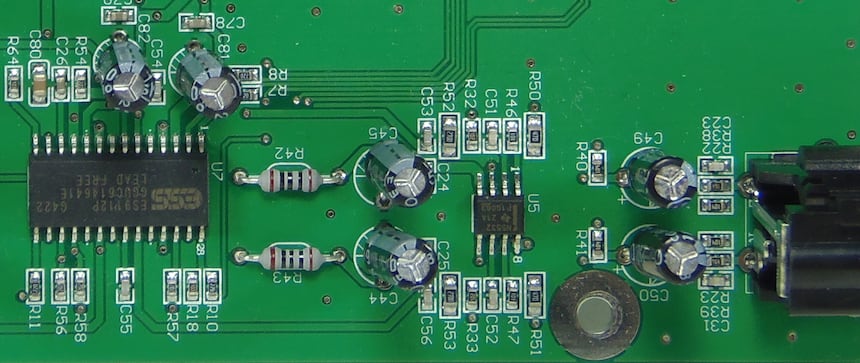
An anti- aliasing filter built to prevent the creation of unwanted digital signals is placed above the ESP112 circuit, and is formed around a dual low noise NE5532 operational amplifier.
Listening
Even though individually the components used are not highly original, (the PCM5102 for the conversion, the NE5532, the integrated amplifier TPA6120), they are incredibly reliable, and can be expected to produce good sound results.
However, when these components are actually put together, the result is even better than expected. It is an absolute pleasure to the diverse pieces of the outstanding Fantasia on British Sea Songs by Henry Wood, perfectly rendering their particular ambiance.
Thus, Jack?s The Lad is mischievous and dynamic when desired and the exchange between the flute and the violins crescendos whilst keeping its finesse, whereas the glorious final explodes with the Rule Britannia with the brass? powerful and striking chords.
One can also appreciate the finesse of the performance in the opening of Peter Schmoll und seine Nachbarn, an extract from the beautiful album of Weber?s ouvertures, interpreted by the Tapiola Sinfonietta and directed by Jean-Jaques Kantorow (Studio Masters version of 24 bits at 96kHz). The modern orchestration of the father of romantic German music is reproduced with much conviction by the Brik AP-32H, following the slightest variation of rhythm in Preciosa?s ouverture, feasting on the difference in dynamic, and savouring the playing of the violins. Very beautifully reproduced.
Once again, the amplifier delivers an enthusiastic restitution full of panache for the Studio Master version (24-bit/96kHz) of Dvorak?s Concerto pour violoncelle Op.104 by Alisa Weilerstein and the Czech Philharmonic Orchestra, conducted by Jiri Belohlavek. Here, one perfectly follows the playing of the soloists and the orchestral accompaniment.
To conclude, we really loved the Brik Audio AP-32H amplifier for headphones, with DAC and analog/digital convertor, as the high quality of its sound reproduction creates amazing results. For a very reasonable price, the amplifier offers the possibility of digitizing its analogical sources, which is very rare. For these reasons, we have honoured it with our Qobuzissime award.
Manuel d'utilisation (User's Manual)
If you are a manufacturer, importer, distributor or actor in the domain of sound reproduction and you wish to contact us, please do so using the following address: newstech@qobuz.com
If you are passionate about our Hi-Fi Guide and you wish to contact us, please do so using the following address: rubriquehifi@qobuz.com
